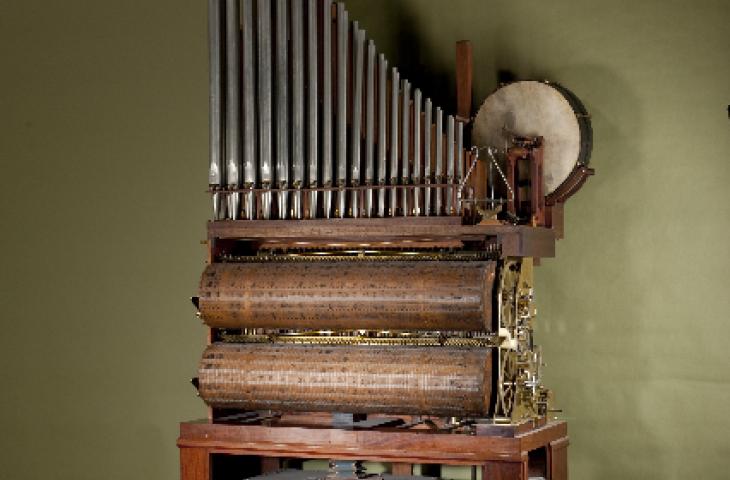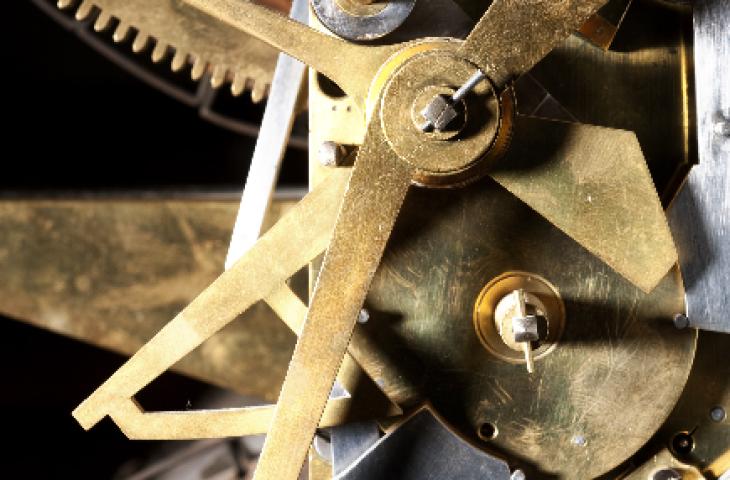Componium

Componium, Diederich Nickolaus Winkel, Amsterdam, 1821, inv. 0456
Componium

Componium, Diederich Nickolaus Winkel, Amsterdam, 1821, inv. 0456
The componium was devised in 1821 by Diederich Nikolaus Winkel; son of a watchmaker, he set up in Amsterdam at the beginning of the nineteenth century. In 1814, he invented the mechanical metronome, but Johann Nepomuk Mälzel, a maker of mechanical instruments, began manufacturing it under his own name. Winkel took revenge by out doing him in his own field and producing the componium, a masterpiece among mechanical instruments.
Besides reproducing music, the componium can also ‘compose’ it. The music is produced by two cylinders set with pins and staples that open the stops of the organ pipes. When the instrument is set in motion, the theme is first heard; then, the two cylinders or barrels in turn play variations on it, one playing a two-bar unit of music while the other pauses. The cylinder at rest can move to commence a new variation. Whether or to what position it moves is determined by an aleatoric mechanism, permitting virtually endless variations to be created.
The instrument was only moderately successful and consequently never went into production. This example held by the MIM is unique in the world.